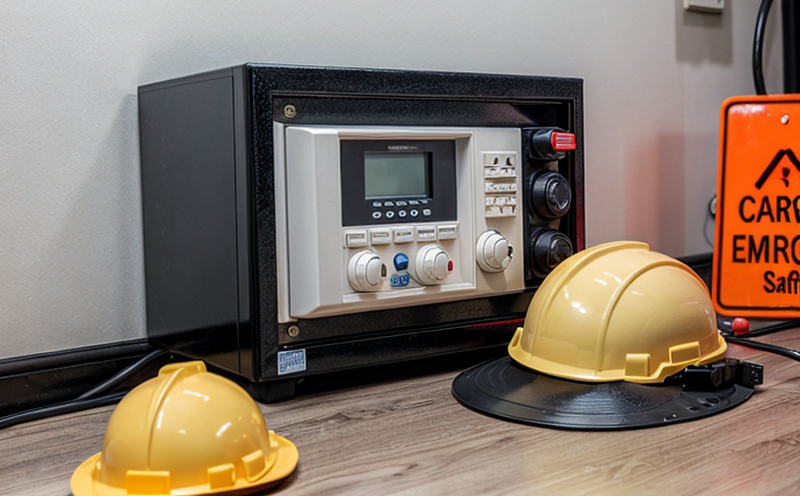Safety & Emergency Systems Testing
Ensuring the reliability and safety of emergency systems is critical in aerospace and aviation. These systems include life-critical components such as fire detection and suppression, emergency lighting, oxygen generation, and cabin pressure control mechanisms. Our comprehensive testing services are designed to meet the stringent requirements set by global standards like ISO 16750-3 for electrical/electronic components in vehicles and aircraft.
The aerospace industry operates under some of the world's most rigorous safety regulations. Compliance with these standards not only ensures passenger safety but also contributes to a company’s reputation as an industry leader. Our lab is accredited to perform tests that verify compliance with these regulations, including:
- ISO 16750-3:2020 - Electrical/electronic components in vehicles and aircraft
- ASTM E84-19: Standard Test Methods for Surface Burning Characteristics of Building Materials
- IEC 60601-1-2: Medical electrical equipment - Part 1-2: Essential requirements for safety of medical electrical equipment and related devices
We use state-of-the-art facilities equipped with the latest testing apparatus, including thermal imaging cameras, oxygen analyzers, smoke generators, and pressure chambers. These tools enable us to simulate real-world conditions that emergency systems might encounter during operation.
Our team of experts ensures that each test is conducted meticulously, following international standards and best practices. From initial consultation with the client to final report delivery, we provide a seamless service tailored to meet the specific needs of aerospace and aviation clients. This includes assistance in selecting appropriate specimens for testing, conducting preliminary assessments, and interpreting results.
Our expertise extends beyond just meeting regulatory requirements; it also involves predicting potential failures and offering recommendations for improvement based on our findings. By leveraging our deep understanding of both the sector-specific challenges and the broader context of emergency system safety, we help clients optimize their designs and processes.
Benefits
Adopting rigorous testing protocols for your emergency systems can yield numerous benefits:
- Enhanced Safety: Proven compliance with international standards ensures that your products are safe under all operational conditions.
- Improved Reputation: Meeting or exceeding industry expectations enhances your brand's reputation and market standing.
- Prompter Regulatory Compliance: Regular testing helps preemptively address any potential issues, reducing the risk of costly non-compliance penalties.
In addition to these tangible advantages, our services also support ongoing product development by providing valuable feedback on performance and durability. This insight is invaluable for R&D teams seeking continuous improvement in their designs.
International Acceptance and Recognition
- Aerospace Industry: Our certifications are internationally recognized within the aerospace industry, ensuring that your products can be sold globally.
- Civil Aviation Authorities: Compliance with our tests is often a prerequisite for certification by major civil aviation authorities like the FAA (US), EASA (EU), and CAAC (China).
- Regulatory Bodies: Our services align with global regulatory bodies, including ICAO (International Civil Aviation Organization) and ISO (International Organization for Standardization).
Use Cases and Application Examples
Our safety & emergency systems testing services cover a wide range of applications, from fire suppression systems to oxygen generation units. Below are some specific use cases:
- Fire Suppression Systems: Testing the effectiveness of fire extinguishing agents and their delivery mechanisms.
- Oxygen Generation Units: Evaluating the purity, flow rate, and reliability of oxygen production systems.
- Cabin Pressure Control: Assessing the integrity and functionality of cabin pressure regulation systems to ensure passenger comfort and safety.
- Emergency Lighting: Verifying the brightness and duration of emergency lighting in various scenarios, such as power failures or emergencies.
In each case, our testing process involves detailed inspections, simulations under controlled conditions, and rigorous analysis to ensure that all safety parameters are met. This approach ensures that your products not only comply with regulations but also perform reliably in real-world situations.





